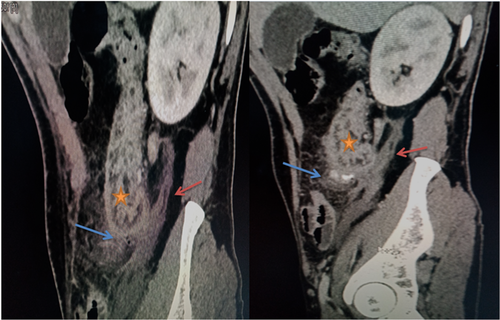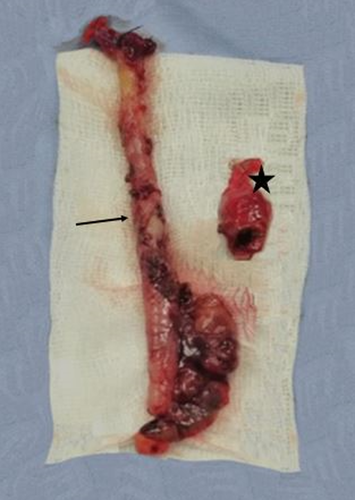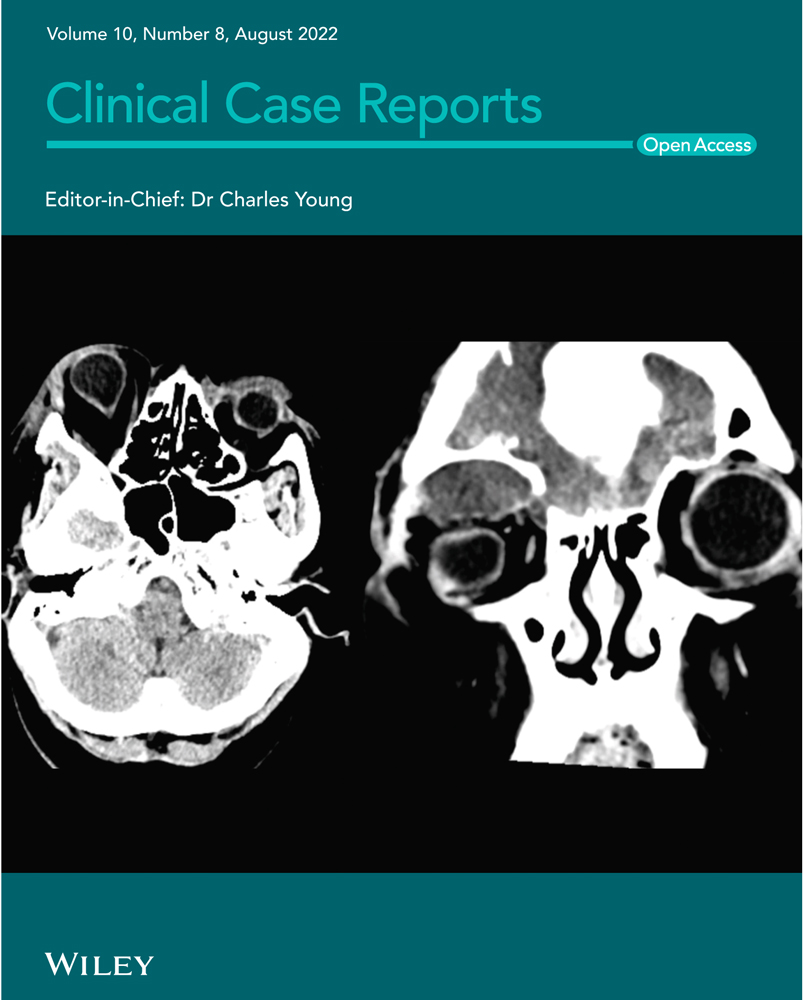Laparoscopic diverticulectomy of perforated right-sided colonic diverticulitis
Abstract
The perforation of the right-sided colonic diverticulitis (RSCD) is a rare surgical emergency with highly variable clinical presentations. The preoperative distinction between acute appendicitis and perforated diverticulitis represent a dilemma for surgeon. The laparoscopic repair is a feasible method instead of ileocecectomy in selected cases.
1 CASE PRESENTATION
A 48-year-old man presented with acute abdominal pain and fever since the day before. The physical examination revealed abdominal distension and right iliac fossa tenderness. His WBC was 10,800/mm3 and CRP was 63.8 mg/dl.
The abdominal CT scan showed an appendix at 8 mm with periappendiceal fat infiltration and locules of free gas suggesting a perforated appendicitis (Figure 1).

An emergent laparoscopy was performed and showed an inflamed retrocecal appendix associated with a perforation of 3 cm solitary right-sided colonic diverticulitis (RSCD) sitting on the antimesenteric side of the cecum (Figure 2).

A laparoscopic appendectomy and diverticulectomy were performed using an Endo GIA stapling device (Figure 3). The postoperative period was uneventful. The pathology examination confirmed the diagnosis and excluded any malignancy.

The RSCD is believed to be congenital and affects mostly young people.1 The perforation of the RSCD is rare with atypical clinical presentation similar to acute appendicitis.1, 2
Computed tomography is the gold standard imaging modality used to explore young adults with acute abdomen.1 Therefore, more than 70% of patients were operated with a preoperative diagnosis of acute appendicitis.1
Laparoscopic repair of RSCD is a feasible method to make an accurate diagnosis and prevent catastrophic complications in rare cases.1, 2
AUTHOR CONTRIBUTIONS
Ahmed Bouzid involved in writing—review and editing (equal); Nizar Kardoun involved in writing—review and editing (equal); Kais Fourati involved in writing—review and editing (equal); BenAmar Mohamed involved in conceptualization; Salah Boujelbene involved in validation and supervision.
CONFLICT OF INTEREST
None declared.
ETHICAL APPROVAL
Personal data have been respected.
CONSENT
Written informed consent was obtained from the patient to publish this report in accordance with the journal's patient consent policy.
Open Research
DATA AVAILABILITY STATEMENT
Personal data of the patient were respected. No data are avail-able for this submission." cd_value_code="text




